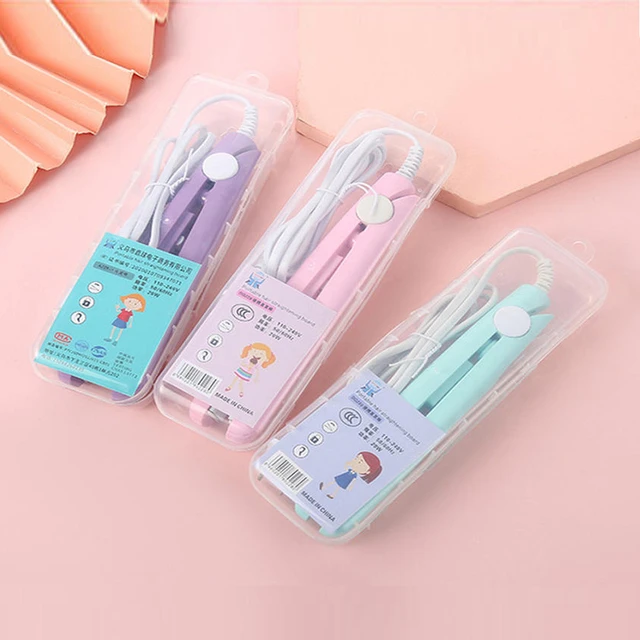Introduction
Straightening short hair can transform your look and provide versatility in styling options. However, selecting the right size straightener is essential for achieving optimal results. The size of the straightener’s plates can greatly impact the effectiveness and ease of styling short hair. In this guide, we will explore different factors to consider when choosing the right size straightener for short hair. From plate width to styling techniques, we will provide specific insights to help you make an informed decision and achieve your desired hairstyle with ease and precision.
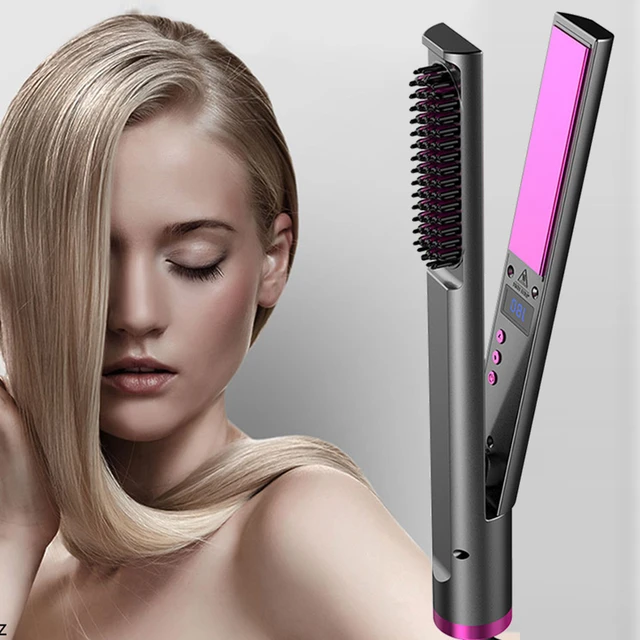
What size straightener should you use for short hair?
Understanding Plate Width
1.1. Narrow Plates
Straighteners with narrow plates, typically around 1/2 inch to 1 inch in width, are well-suited for short hair. The slim design allows for better control and maneuverability when styling close to the roots and around the face. Narrow plates can easily grab and straighten shorter strands and create defined, precise styles.
1.2. Wide Plates
Straighteners with wider plates, usually measuring 1 1/4 inches or more in width, are generally better suited for longer hair lengths. The wider surface area covers more hair with each pass, facilitating faster styling for those with thicker or longer hair. However, wide plates may be less effective for styling short hair, as they can be difficult to maneuver and may not grip shorter strands as securely.
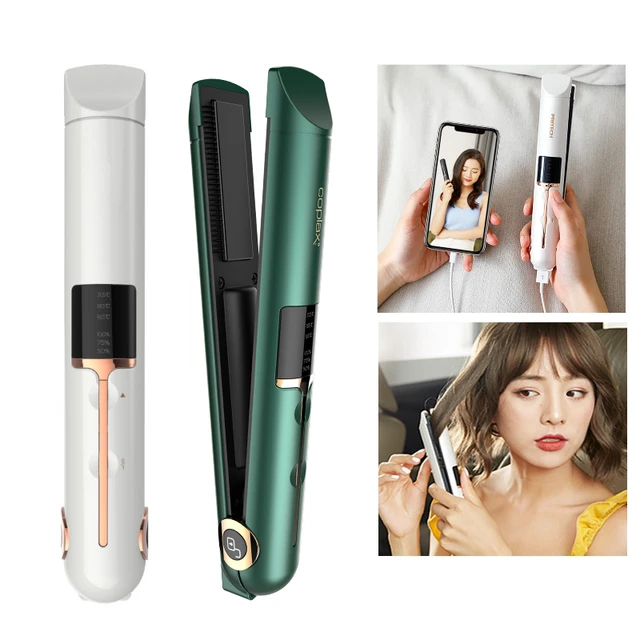
Consider Hair Texture and Thickness
2.1. Fine or Thin Hair
For those with fine or thin short hair, narrower plates are often the better choice. They allow for greater precision and control when straightening delicate strands. Additionally, narrow plates are more suitable for shorter hair lengths, as they can easily grip and straighten individual strands without excessive tension.
2.2. Thick or Coarse Hair
If you have thick or coarse short hair, wider plates may be more efficient. The larger surface area of wide plates allows for quicker styling, as it can accommodate larger sections of hair with each pass. However, even with thicker hair, you should still consider the length and density of your hair. If your short hair is relatively thin, narrower plates may still provide the precision needed to straighten individual strands effectively.
Maneuverability and Precision
3.1. Styling Around the Face and Roots
When considering the size of a straightener for short hair, it is important to think about the areas that require the most precision, such as the hair around the face and the roots. Narrow plates excel in these areas, as they allow for greater control and maneuverability. They can effortlessly reach close to the scalp and work well in tight spaces, providing refined results.
3.2. Creating Curls and Waves
While straighteners are primarily used for straightening hair, they can also be used to create curls and waves. For short hair, narrower plates offer more versatility in creating defined curls and waves. The ability to wrap shorter sections of hair around a narrower plate helps to achieve tight, bouncy curls or precise waves that complement short hairstyles.
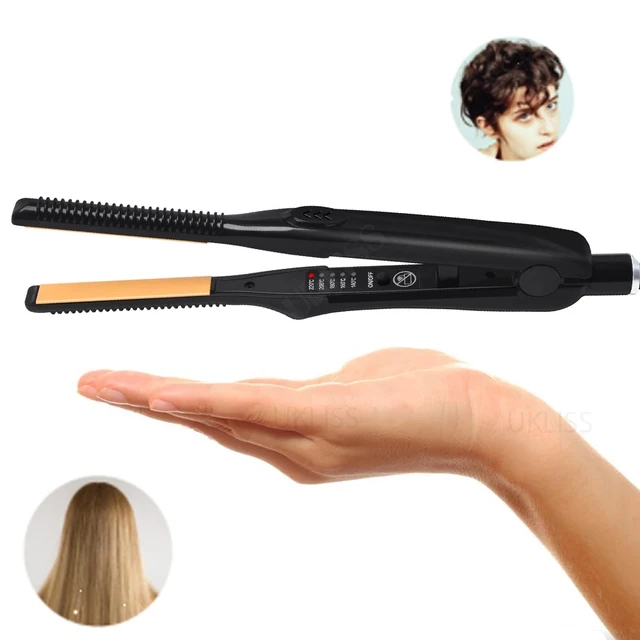
Additional Features to Consider
4.1. Temperature Control
When selecting a straightener for short hair, look for one that offers adjustable temperature settings. This feature allows you to customize the heat according to your hair type and desired style. Fine or thin hair may require lower heat settings, while thick or coarse hair may benefit from higher temperatures. Being able to control the temperature ensures the right balance between effectiveness and hair health.
4.2. Floating Plates
Straighteners with floating plates are designed to provide better contact with the hair and distribute heat evenly. This feature can be particularly beneficial when dealing with short hair, as it ensures consistent styling results throughout the hair. Floating plates adapt to the hair’s thickness and prevent excessive pressure, reducing the risk of causing damage.
4.3. Ionic Technology
Many modern straighteners incorporate ionic technology, which emits negative ions to counteract the positive ions that cause frizz and static in the hair. This feature helps to smooth and enhance shine, making it a valuable addition for achieving sleek and polished styles, even with short hair.
Heat Protection and Hair Health
5.1. Use of Heat Protectant Products
Regardless of the size of the straightener, it is vital to prioritize the health of your hair. Heat protectant products act as a barrier between your hair and the heat of the straightener, reducing the risk of heat damage. Before using a straightener, apply a heat protectant spray or serum evenly throughout your hair to provide an extra layer of protection.
5.2. Avoid Excessive Heat Exposure
While straightening short hair, it’s important to use the appropriate heat settings to prevent overheating and minimize the risk of damaging your hair. For fine or thin hair, use lower heat settings, while thick or coarse hair may require slightly higher temperatures. Remember to always start with the lowest heat setting and gradually increase if necessary.
5.3. Work in Small Sections
When straightening short hair, working in small sections can ensure that each strand receives sufficient heat and results in a sleek, straight finish. Divide your hair into manageable sections and run the straightener through each section slowly and evenly to achieve an even and consistent result.
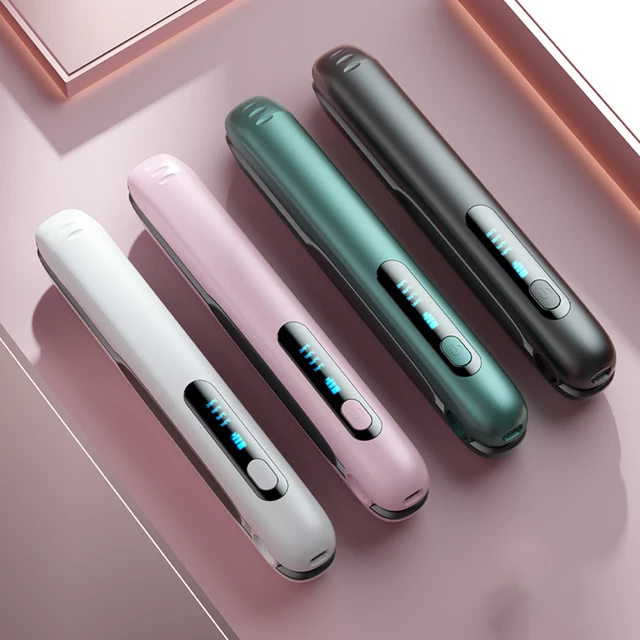
Professional Advice and Demonstrations
6.1. Consult with a Stylist
If you’re unsure about the size of straightener to choose for your short hair, consider consulting with a professional stylist. They can offer personalized advice based on your hair type, length, and desired style. A stylist can also provide demonstrations and tips on how to use the straightener effectively while optimizing the results for your specific hair needs.
6.2. Video Tutorials and Online Resources
In addition to seeking advice from a professional stylist, there are numerous video tutorials and online resources available that provide step-by-step instructions on how to straighten short hair with different size straighteners. These resources allow you to see demonstrations and gain insights into techniques tailored to your specific hair length and texture.
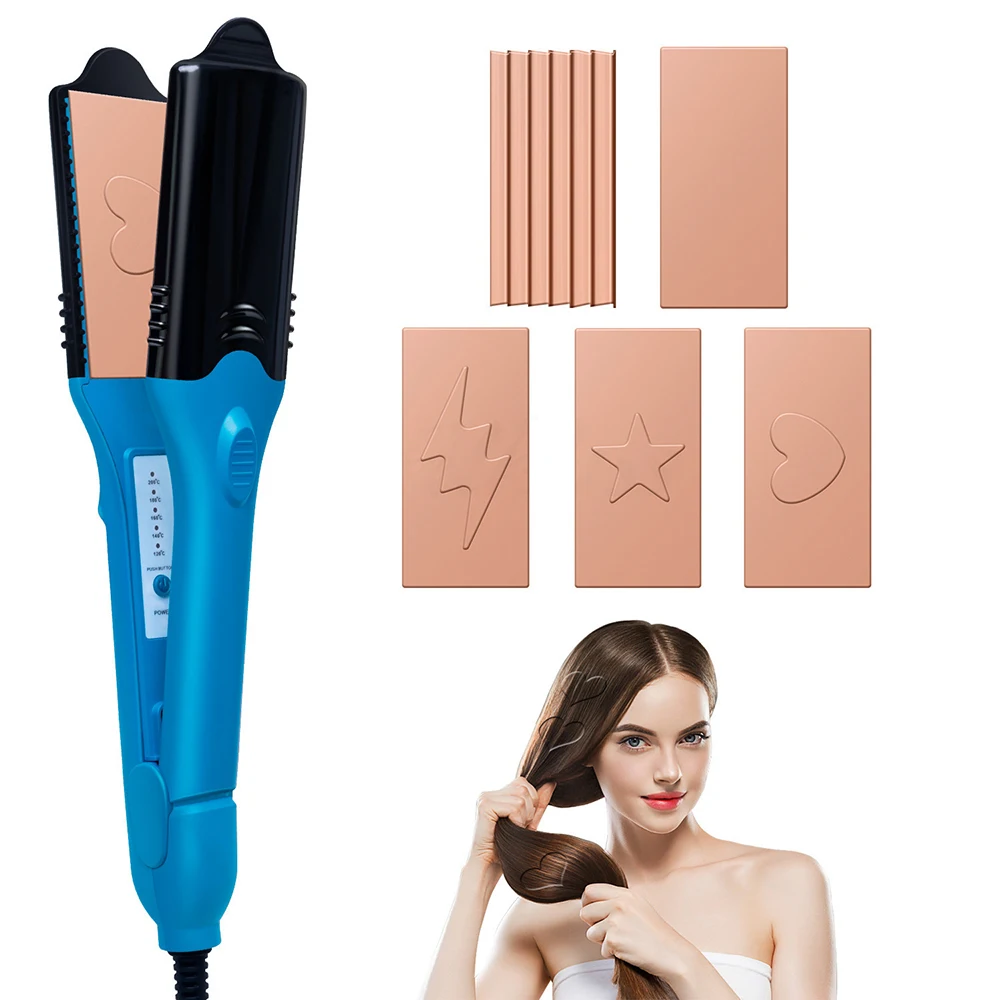
Conclusion
Selecting the right size straightener for short hair is essential for achieving desired styling results. Narrow plates, measuring around 1/2 inch to 1 inch in width, are generally the most suitable option, providing greater maneuverability and control when working with shorter strands. Narrow plates accommodate the precision needed to style around the face and roots effectively.
Consider your hair texture, thickness, and desired style when choosing a straightener. Fine or thin hair can benefit from narrower plates, while wider plates may be more efficient for thick or coarse hair. Additional features such as temperature control, floating plates, and ionic technology can enhance styling results and hair health.
Ultimately, the best size straightener for short hair is one that allows for precision, control, and ease of styling. By considering your specific hair characteristics and desired outcomes, you can confidently select a straightener that suits your needs, simplifying the process of achieving the sleek, straight, or textured styles you desire for your short hair.
